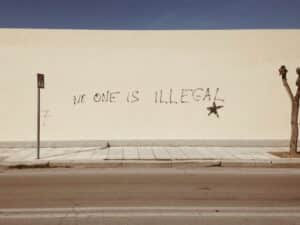Join JPI UE
Faq
FAQ
Please click here for the frequently asked questions we collected.
If you have an additional questions you are welcome to mail us at info@jpi-urbaneurope.eu

Migrants in the Public Eye
“Cities have always attracted people from elsewhere – they are in fact the product of migration – and without migrants, cities would not exist.”
With these words, the MAPURBAN project establishes that the movement of people is the pumping heart of urban places. And they should know: their project’s focus was the identification of ways to improve migrants’ access to essential urban resources and participation in urban society.
And yet, many of us still have minimal understanding of migrants’ experiences or even who they are. This comes largely from the fact that there are so many terms – whether official or those banded about by the media – that are hard to define and, in our minds, paint an oversimplified, unrealistic picture.
This ‘othering’ of migrants makes it easier for political spheres to engage in rhetoric that demonises new arrivals.
In turn, this excuses national policies that many European countries use to create an environment of hostility, allegedly out of fears for forced cultural change, heightened concerns for safety, and the drain on resources.
Over time, inflammatory language becomes normalised. There are barely any legal grounds for the dehumanising term “illegal immigrant” thanks to the internationally agreed conventions that protect a person’s rights upon arrival, but that doesn’t stop people using it.
In some European countries, an unauthorised stay is actually an administrative offence rather than a criminal offence.
Sarah Spencer, LoReMi
That’s because the derisory stigma attached to ‘illegal’ immigration is weaponised by populist politics to create social divisions, designed to dissuade further immigrants from arriving. However, with the rate of migration steadily rising year-on-year, it doesn’t seem to be working.
With new conflicts arising closer to home – plus an increase in environmental disasters caused by climate change – Europe’s cities need to prepare to integrate, not isolate, evermore new arrivals. But to do this effectively, we need to stop listening to the vitriol and make an effort to understand who Europe’s migrants really are.

What Makes a Migrant?
To better understand migrant experiences, the eight JPI Urban Europe-funded projects investigated the issues affecting those whose residency status fits a spectrum of legal definitions and reasons for migrating.
About the only thing that many arrivals had in common was the hope of carving out a better – or at least a safe and stable – life.
The MICOLL project’s research addressed the barriers migrant’s face to accessing quality and affordable housing, especially as refugees. They write: “migrants and refugees are often considered a homogeneous group with similar needs and behaviour”. When, in fact, “refugees present a diverse group of residents in terms of their cultural backgrounds, housing careers, [and] individual needs” just as ‘native’ residents and other migrants do.
ProSHARE was the only project to include a focus on second and third generation migrants. Looking into how non-commercial sharing is practiced in socially mixed neighborhoods, they decided “to speak about insiders and outsiders – established migrant communities and new common communities – as a way of differentiating what we were looking at”, explains Helena Cermeno Mediavilla.
The EMPOWER project similarly draws a distinction between arrived (new) and settled (old) migrants, plus long-standing non-migrant populations, all of whom co-exist in superdiverse communities.
This project researched the impact community-led infrastructures and place-making strategies have on female residents’ ability to ‘reclaim the city’ as empowered residents. Migrants all have “multiple and intersecting” diversities, their report tells us, such as “ethnicity, faith, immigration status, rights and entitlements, gender and age, and patterns of spatial distribution”.
What we need to keep in mind is that a migrant is not just a migrant, and not all migrants are alike.
Such diversity can attract some individuals who feel able to ‘blend in’ but may deters others.
EMPOWER
Recognised Legal and Common Definitions
Fundamental knowledge of the various types of migrants gives us a greater appreciation for the research but also a basis for knowing how best to support their integration into our cities.
Where someone comes from, why they left, and the policies of their destination country are all influences in determining a newcomer’s status. This in turn impacts upon their entitlements, level of self-determination, general wellbeing, and capacity to integrate.
It’s still not always helpful to pigeonhole migrants. For one thing, they may straddle two or more categorisations. But agreeing on some overarching definitions can help us identify their vulnerabilities as a basis for responsive support.
EU citizens have more freedom to stay and work anywhere within the Bloc than third-country nationals (which now includes those from the UK). Everyone else requires a visa and are generally restricted by borders and time limits.
Migration between EU states in 2021 rose 17% on the previous year, to 1.4 million. As 2022 commenced, 23.8 million people (5.3%) of the 446.7 million people living in the Bloc were non-EU citizens. Most of these seem to be family reunions (around half of the world’s refugees are below 18 years old) but plenty are economic migrants, attracted by the promise of financial prosperity.
Wherever they come from or why, they all have to contend with language barriers, cultural differences, and unfamiliar bureaucratic systems in much the same way as migrants bearing another legal status, including refugees.
To avoid any confusion, it’s helpful to recognise the legal distinction between asylum seekers and refugees.
Asylum seekers leave their country seeking protection from persecution and serious human rights violations. They are refugees awaiting a decision on their claim to asylum.
Refugees may simply refer to displaced people, but for those who have applied for asylum in their destination country this takes on a legal hue. In this case, we can say that a refugee is someone who has either:
It is possible to appeal an asylum decision. Refugees may legally remain until this has been processed.

Refugees generally are victims of forced migration. There is no internationally agreed standard nor legal definition for this, though, which confounds coordinated pan-European policy.
Joanna McIntyre led The Art of Belonging project, which used creative tools and cultural placemaking to draw links between art and social integration. She criticises the term ‘forced’ because it presents people as victims: “It hides the fact that the act of leaving has taken a lot of agency, a lot of resilience, and a lot of strength.”
But, as a consistent reference point, it’s useful. Forced migrants:
Very few people arrive without a claim to asylum or any form of permission to enter, such as a tourist visa.
Third country nationals who enter the European Union with a permit to work or study are generally tied to a specific country and duration. If they allow this to lapse without leaving, they become ‘undocumented’.
But ‘undocumented’ can be a misnomer: in most cases someone will have some form of document – such as a passport – it’s just that their eligibility to stay is no longer valid.
Visa detta inlägg på Instagram
Image credit: Instagram / Platform for Undocumented Migrants
Due to the ambiguity of the term, influential bodies like the United Nations and the European Commission are beginning to shift from using ‘undocumented’ to something less evocative: irregular migrants.
This embraces all manner of situations, such as:
Legally and practically, irregular migrants have the fewest entitlements to access public services – or ‘social rights’ – than anyone, including those facing precarity, although the definitions do overlap.
The LoReMi project looked specifically at the needs of precarious migrants and aimed to strengthen local strategies to address how they are excluded from essential services. Their report helpfully explains that precarious migrants as a group include:
Precarious working conditions, such as a lack of formal employment eligibility, can be the starting point for legal precarity.
LoReMi
Precarious migrants face the most restricted access (rather than entitlement) to rights, services, and welfare benefits of any group, even compared to asylum seekers.
The Welcoming Culture of Cities
Given the myriad statuses and confusing overlaps, research projects included a call for more clarity. This would help local authorities and services comprehend their entitlements and respond with what support migrants really need.
At least all the naysaying and discrimination so prominent in public-political discourse is not so much reflected on-the-ground.
Jonathan Rock Rokem, from the MAPURBAN team, puts this down to what he calls ‘co-presence’.
If you know people who are migrants, if you actually have daily encounters with them, you’ll be much less afraid of them.
Jonathan Rock Rokem, MAPURBAN
That’s why cities are integrators, he adds. The size of urban populations can absorb newcomers in a way that rural communities cannot. Regularly, the local population will not only accept them but also be involved in their integration.

Urban Migration is Here to Stay
In interview, Helena Cermeno Mediavilla and Carsten Keller of ProSHARE stressed the moral obligation Europeans have for upholding the rights of newcomers and offering them chances for a decent and meaningful quality of life. Migration towards, between, and within European cities will not stop, they tell us; hostility will not prevent it and money alone is not the solution to the challenges it presents.
Local authorities throughout the continent need to develop a robust, comprehensive, sensitive, and preferably coordinated response to the migration challenge and the needs of those it encompasses. Just as well there are plentiful solutions being tested – and, it seems, working. For a grasp of what these are, head over to our article detailing recommendations for city responses. But for a greater insight into why it’s so important to get it right, turn now to our introduction to integration.
Note: This article is commissioned by JPI Urban Europe and produced in collaboration with CityChangers.org. CityChangers.org is a community-centred content platform for urban change-makers around the globe, created by Urban Future. JPI Urban Europe funds projects which address pertinent global urban challenges. Between January 2021 and January 2023, their support enabled eight projects to explore the concepts of urban migration and integration. JPI Urban Europe has partnered with CityChangers.org to make the findings of these research projects more tangible and accessible to a wider audience. More details about the Urban Migration call can be found on the JPI Urban Europe website.